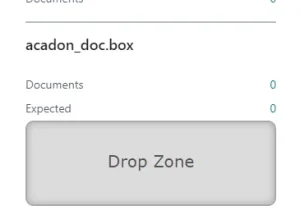
As a logistics manager you are responsible for planning the Routes of your outgoing orders. While you can use your own trucks for delivering the goods, sometimes you do not have enough capacity. When this is the case, you call external logistics company XYZ and agree on a price. You assign the corresponding documents to a route for this external delivery company, and that’s it.
A few days later your colleague from the finance department comes up to you: ‘We’ve received an invoice from XYZ, do you know on which price you agreed and for which specific Route Allocation it is?’
To answer this question you either need an extremely good memory or another place where you keep track of this (like a Post it-note on your desk), both not very efficient. Let’s see how you can make your life and that of your colleague easier!
As usual, you start at the Disposition Planning where you find the overview of all the documents that you need to plan, including additional information. Here you notice that you do not have enough capacity for a certain day.
For the orders that you would like to ship with an external logistics company you change the value in the Shipping Agent Code column to the corresponding company, in this example Spedition XYZ.
To see which Sales Orders will be shipped by a specific Shipping Agent, you simply filter on the corresponding Shipping Agent Code in the column.
Since you’ve filtered the Shipping Agent Code, you can easily select all lines for which you want to create a route and click on Create Route Allocation.
You will get a notification once it is successfully created, from where you can open the Route Allocation.
Because you chose a Shipping Agent Code for which you have activated External Logistics and it is allocated to a Vendor, the button Create Purchase Order is visible on the Route Allocation Card.
Once you click on Create Purchase Order you find the option to create a New Document or Expand an existing document.
You will get a notification once the Purchase Order is created, from where you can open the Purchase Order by clicking on Show Document.
On this new Purchase Order you can see that a text line has been created in which the Route Allocation number is mentioned. On this line you add the agreed price under Direct Unit Cost. And, just like that, you have created an expected invoice.
Now, when there is extra communication about this Purchase Order, for example an order confirmation, you can easily put it in the doc.box. So, you have one place to store everything related to this order.

And, more importantly, if the external logistics company adds your Route Allocation number to its invoice, the finance department can directly check if the invoice is correct and post it correctly. Making booking these invoices as easy as booking invoices for purchased items and therefore, streamlining the process.

